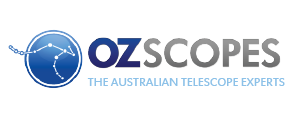Intro
Looking for a Beginner's Telescope? Let us help You!
Chapter 1
Chapter 2
Chapter 3
Now you need to mount your scope!
Chapter 4
Accessorise, Accesorise (with eyepieces and filters)
Chapter 5
Chapter 6
Caring and Collimating your Telescope
Chapter 7
Solar Observations and a How-To guide on making a solar filter

So you have finally decided on a telescope but it doesn’t come with a mount. Or maybe it does come with one but you don’t trust them enough to carry your precious telescope. Fret not, read on and we will give you the lowdown on finding the perfect telescope mount for your telescope!
It is important to remember that a telescope is only as good as the mount or tripod it’s on. Other than holding your telescope, a good mount will ensure that you will have an enjoyable experience when viewing the night sky or taking that perfect picture for astrophotography.
When tracking an object in the sky, different types of mounts will have different types of control mechanisms to allow you to point your optical tube in the right direction. Some even come with electric motors that can be controlled with the push of a button. Generally, all mounts fall into two categories. The Alt-Azimuth and Equatorial mounts.

Telescope Mounts
ALT-AZIMUTH MOUNT
The Alt-Azimuth (Alt-Az / AZ) mount is a simple mount that works by adjusting the vertical (altitude) or horizontal (azimuth) movement in separate motions. The AZ mount is a newer design that is considered to be a simpler alternative to the Equatorial mount (which we will discuss later on) since it is less efficient in tracking celestial motion.
For terrestrial viewing and night sky viewing at low power, the AZ mount is a perfectly fine choice. Their lower price tag also makes them a very attractive option. However, when it comes to deep sky photography, AZ mounts are unable to track objects in the night sky according to the earth’s angle of rotation. This causes objects to rotate in the image over long exposures.
So why would someone buy an AZ mount? It is simply because they are quick to set up and very easy to use especially for beginners. Nowadays, companies have started releasing better AZ mounts with a more durable build, and slow motion controls for a more refined control over small movements when tracking an object. A good example of this would be the Saxon AZ5 Mount with Steel Tripod.
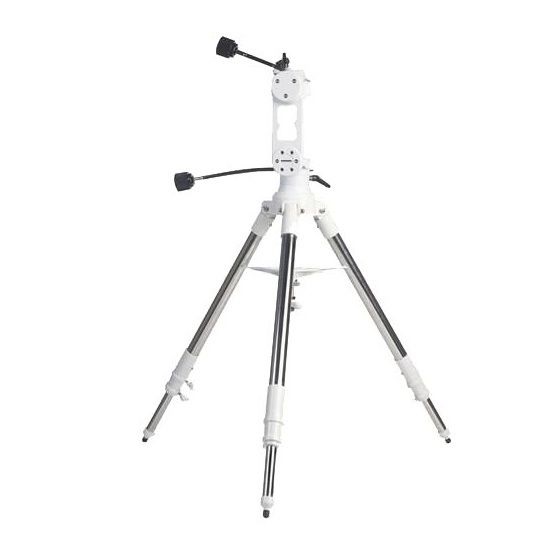
Another variation to the AZ mounts is the Dobsonian mount. They have the same movement mechanics as standard AZ mounts do but instead of resting on a tripod, they usually rest on a low platform near the ground. Dobsonian mounts are typically packaged with a Newtonian Reflector telescope and are highly recommended for beginners. You can read more about Dobsonian Telescopes HERE!
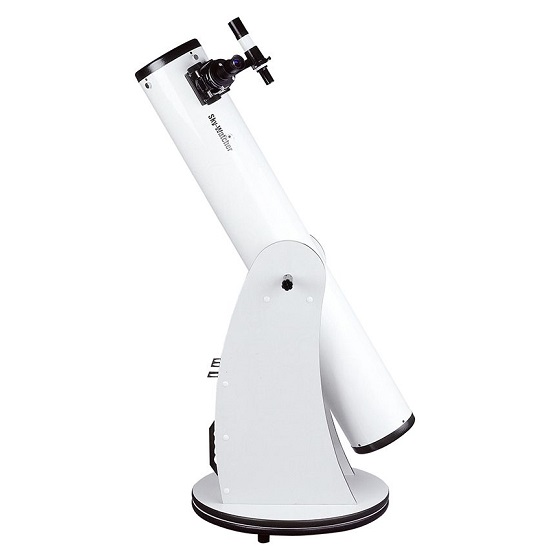
SkyWatcher 6" Dobsonian Telescope
ADVANTAGES
+ Easy to set up and use.
+ Lower price tag.
+ Good for sky viewing.
DISADVANTAGES
- Less convenient for astrophotography.
- Accidental bumps and vibrations from manual handling may transfer to the telescope tube.
EQUATORIAL MOUNT
The Equatorial or EQ mount has been designed to move in a counter direction to the Earth’s rotational axis when tracking an object in the night sky. After aligning the EQ mount to the appropriate latitude angle, the mount will allow the telescope to swing in an east to west arc. As only a single axis is used to track an object, the EQ mount is perfect for astrophotography, especially when trying to capture long-exposure images. To learn how to polar align your EQ mount, click HERE.
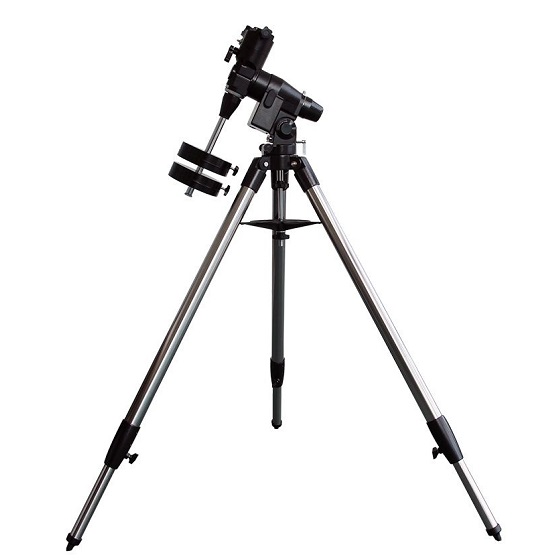
Saxon EQ5 Mount with Steel Tripod
Unlike the AZ mounts, EQ mounts require more setting up. To operate properly, they also come with a counterweight to counterbalance the weight of the optical tube. EQ mounts for larger telescopes can be cumbersome. They also come with a bigger price tag than other types of mounts, however, they are a great investment in the long run for those involved in astrophotography.
There are also plenty of variations for the EQ mounts. Some of the more well-known ones are the German Equatorial mounts (GEM) and Equatorial Fork mounts. GEMs are mostly known for their use of counterweight. Because of this, they tend to be more stable and less likely to suffer from vibration. However, they are also more expensive, heavier, and take longer to set up compared to an EQ Fork mount. The advantage of the EQ Fork mount is its versatility since it can quickly change from an AZ mount for normal observations into Equatorial mode for astrophotography. EQ Fork mounts are less stable compared to GEMs.
ADVANTAGES
+ Excellent for astrophotography.
+ Single axis tracking of a celestial object. + Better versatility and stability compared to AZ mounts.
DISADVANTAGES
- Comes at a higher cost.
- Less portable due to its heavier build.
- Takes longer to set up.
COMPUTERISED MOUNT (GoTo Mount)
Computerised or GoTo mounts (AZ or EQ) have an electronic tracking system with a controller that contains a database of selectable celestial objects for the mount to track. GoTo mounts need to be aligned before they can start tracking. For an AZ GoTo mount, the user will need to perform a star alignment by centering one or more stars in the eyepiece, whereas for an EQ GoTo mount, the mount needs to be aligned to either the north celestial pole or the south celestial pole.
Astrophotography is where GoTo mounts shine the most. With computerized tracking, they add a whole new level of convenience. This is also an alluring factor for beginners since they can start viewing the night sky with little to no knowledge of astronomy. If you’re using your telescope in a light-polluted area, a GoTo mount is also a great way for you to easily locate an object. An excellent GoTo mount like the Celestron CGEM II GoTo EQ mount can go a long way.
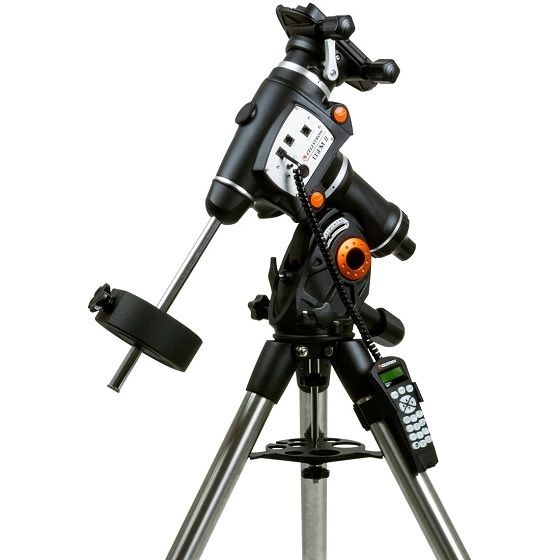
By now, you are hopefully well-informed on the different types of telescope mounts available. Although it is tempting to splurge on an expensive mount, there is no shame in spending less, especially when you are just starting out, and build up from there as you gain more confidence or interest in astronomy. For anything related to astronomy feel free to browse our collection at OZScopes.
